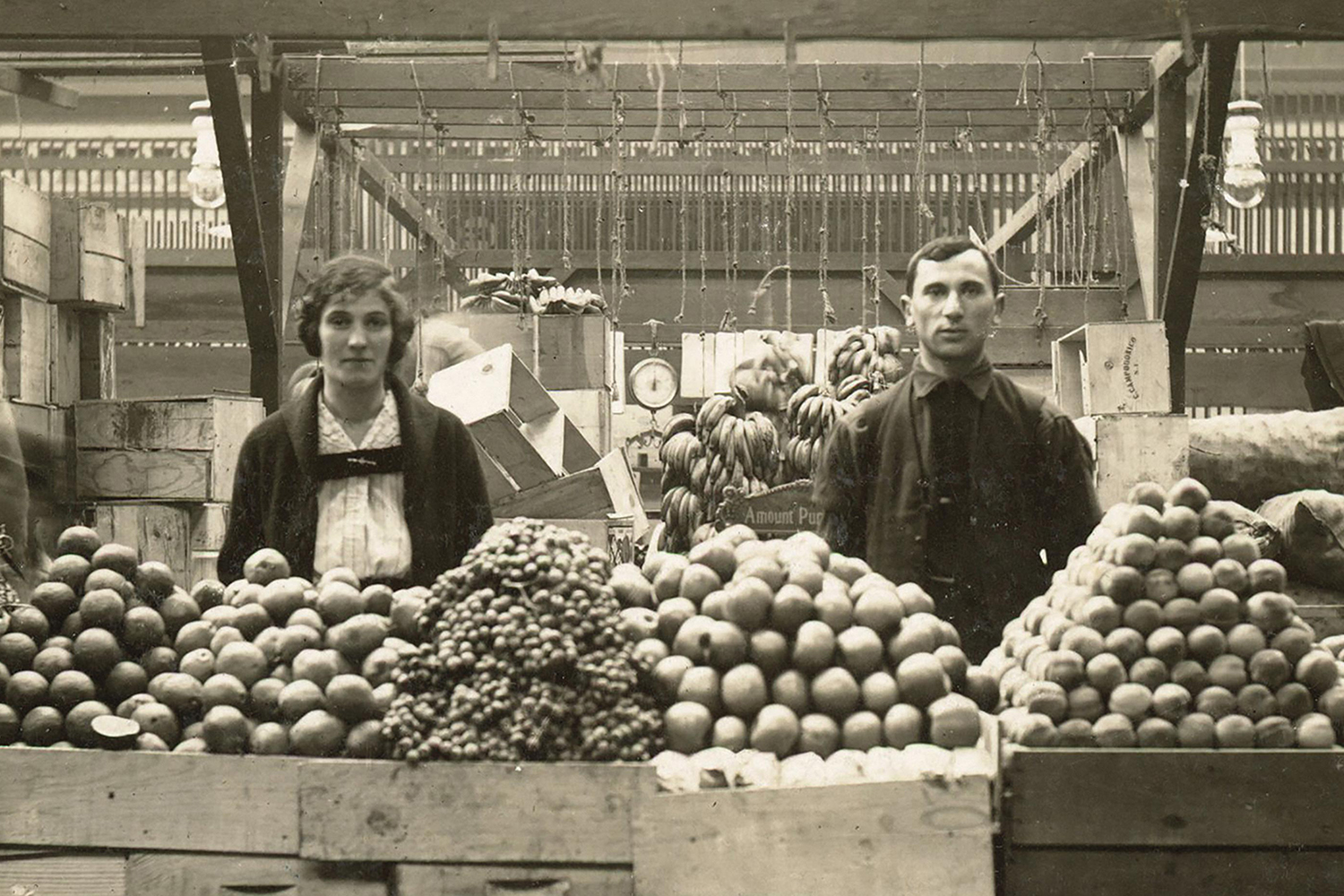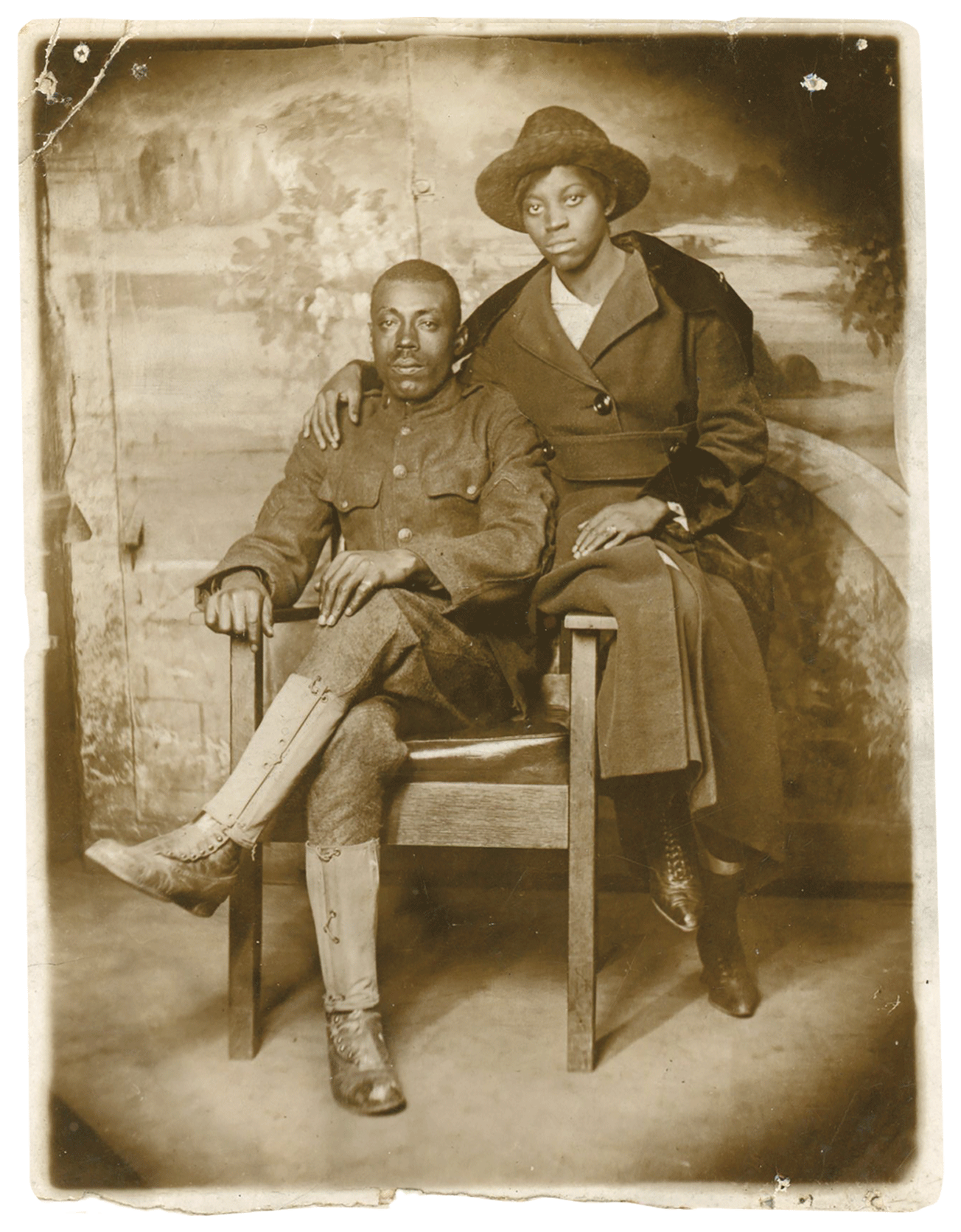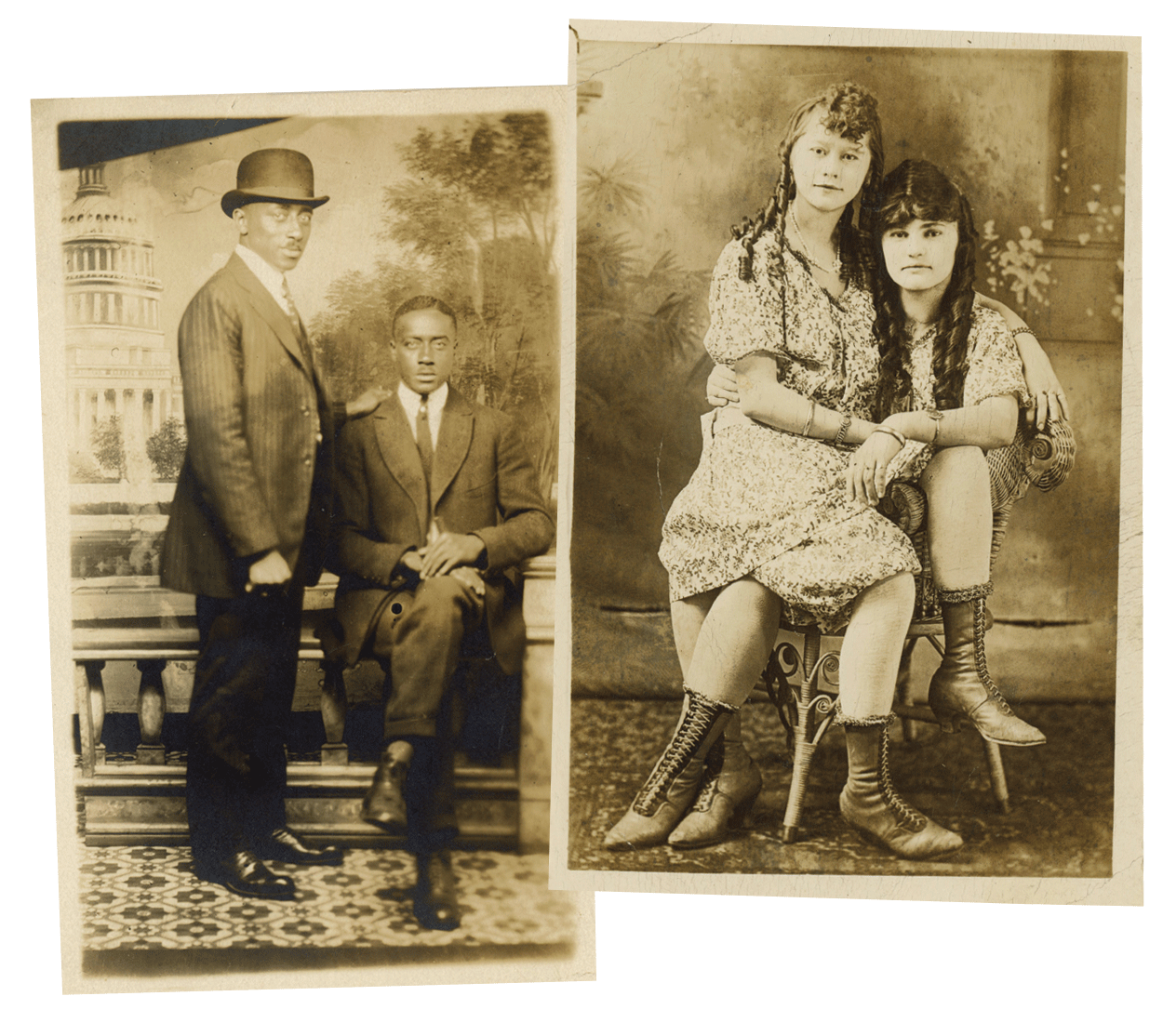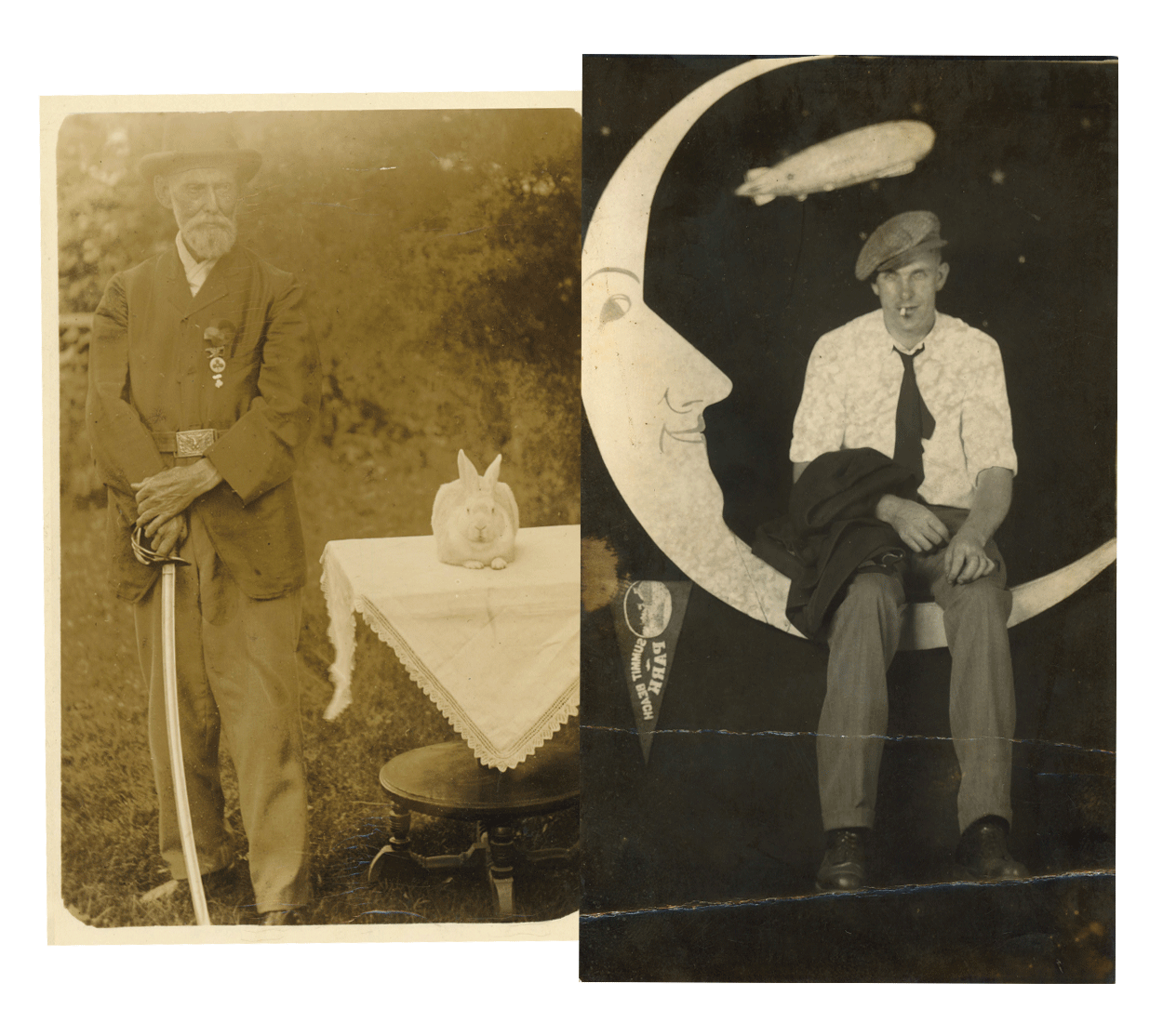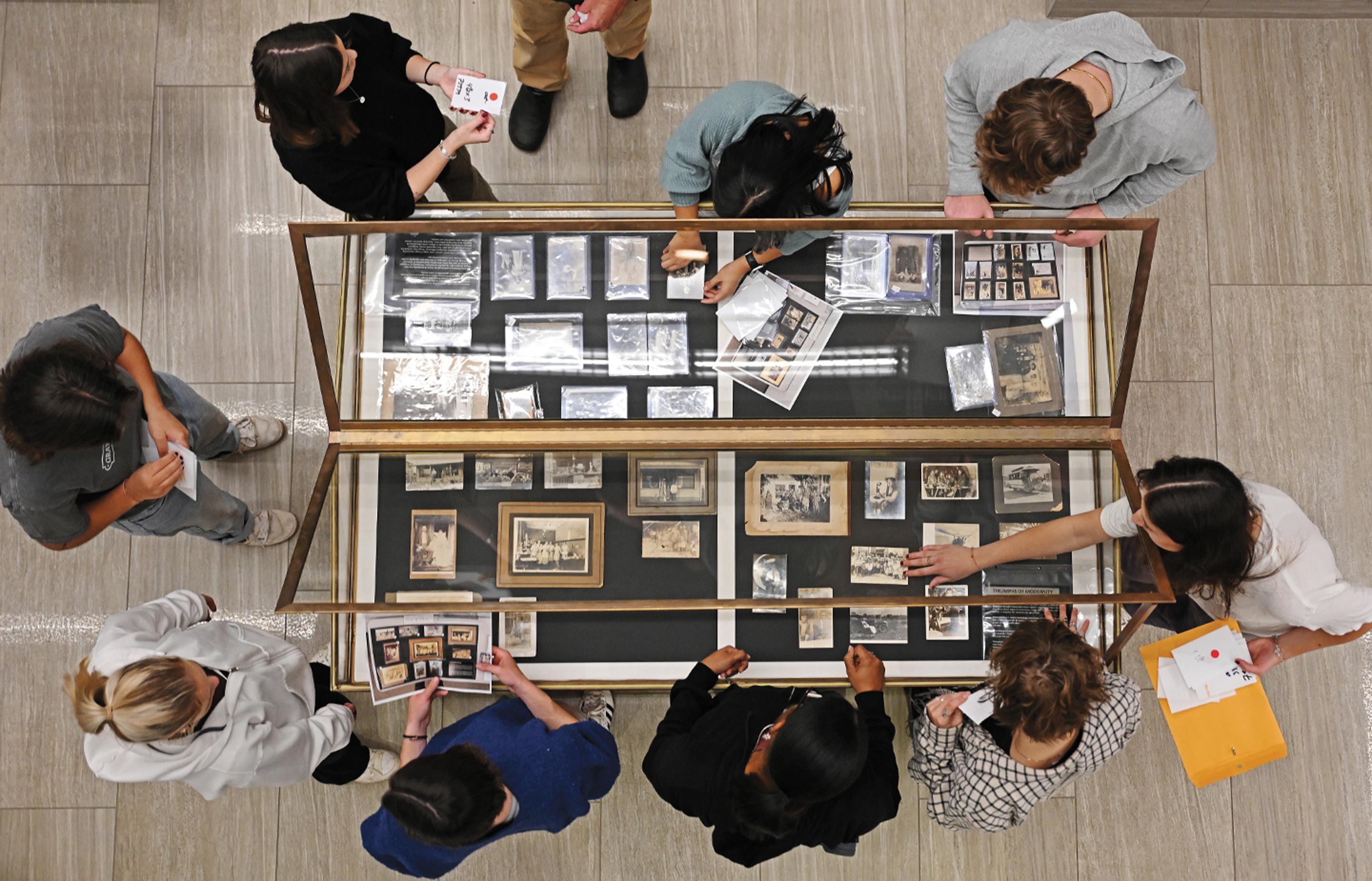Americana Anonymous
A student-curated exhibition puts the focus on the working poor at the turn of the 20th century.
Apicture is worth a thousand words, as the old adage goes. But that doesn’t mean it won’t leave you wanting thousands more.
Who are the two men posing together in front of a painted backdrop more than a century ago? Or the young women with the matching ringlets, dresses and boots? How are they related? What happened just after the photo was taken? Just before? What became of them?
“The thing with these pictures is that they’re wonderful [just] as pictures,” says photography historian Lucy Sante, an award-winning author and chronicler of early 20th-century America.
“They’re also teasers on the narrative of what is pictured. You wish you had the novel that accompanies it, the memoir, the text of the life that leads up to this moment and away from it again.”
The photos, printed on a postcard paper stock sometime in the 1910s, are part of the vast personal collection of Natalie M. Curley, a prominent social historian and internationally recognized collector and dealer of vintage amateur photography. This fall, Curley and Sante were the inaugural participants in the Krane Art History Guest Residency Program, supported by a gift from Connecticut College Trustee Jonathan A. Krane ’90. As part of the residency, they worked with students in Professor Christopher B. Steiner’s art history class, “Perspectives on Photography,” to study, interpret and curate American vernacular photographs from Curley’s collection.
